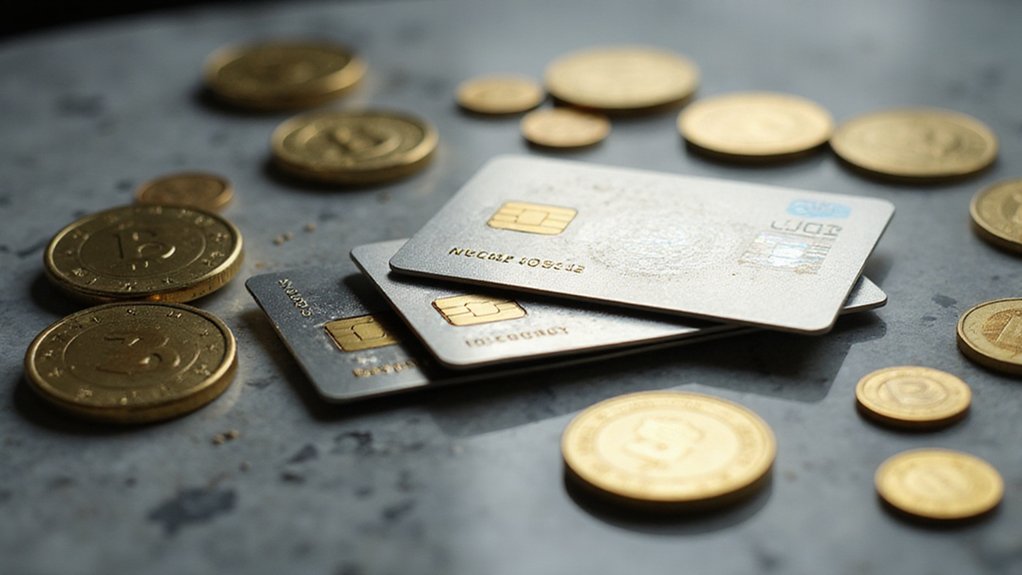How does one accumulate Bitcoin while purchasing groceries, paying for dinner, or settling mundane monthly expenses? The crypto credit card market, projected to expand from $1.53 billion in 2024 to $1.82 billion in 2025, suggests that millions have discovered this particular alchemy of transforming quotidian purchases into digital assets.
The mechanics prove surprisingly straightforward. Cards like the Gemini Credit Card offer 3% back in cryptocurrency on dining, 2% on groceries, and 1% on other purchases—rewards payable in Bitcoin or over 50 alternative cryptocurrencies. The Venmo Credit Card adopts a more traditional approach, providing cash-back rewards with optional automatic conversion into Bitcoin, Ethereum, Litecoin, or Bitcoin Cash, mercifully without transaction fees. These rewards deposit instantly into regulated exchange accounts, eliminating the byzantine process of manual cryptocurrency acquisition. Unlike traditional currencies, Bitcoin operates under decentralized authority, providing users with an alternative to government-issued monetary systems.
For crypto enthusiasts, these instruments function as sophisticated dollar-cost averaging mechanisms, accumulating digital assets through routine spending patterns. The diversification potential extends beyond Bitcoin’s gravitational pull, allowing selection from various cryptocurrencies rather than limiting exposure to a single volatile asset. Integration with established wallets and exchanges facilitates seamless management—a notable improvement over the labyrinthine early days of cryptocurrency handling.
The market’s trajectory appears robust, with compound annual growth rates estimated between 30% and 40% through 2033. North America and Europe currently dominate adoption, though Asia-Pacific markets (particularly India and China) demonstrate significant potential as cryptocurrency acceptance broadens. Rewards-based variants capture the largest market segment, presumably because consumers find cryptocurrency accumulation more compelling than abstract loyalty points. Understanding tokenomics becomes crucial for evaluating the long-term viability of rewards programs tied to specific cryptocurrencies.
Yet reality intrudes upon this digital euphoria. Cryptocurrency rewards carry no guaranteed long-term value—their notorious volatility transforms today’s purchasing power into tomorrow’s uncertainty. Auto-conversion features may inadvertently purchase assets during market downturns (a particularly cruel irony), while spending caps on higher-reward categories limit maximum accumulation for heavy users. Some cards impose substantial annual fees that could negate benefits if cryptocurrency appreciation fails to materialize. Additionally, if crypto appreciates and holders later sell or use their accumulated rewards, capital gains tax may apply to the increase in value.
The fundamental question remains whether these instruments represent genuine financial innovation or merely traditional credit structures adorned with contemporary digital assets. Perhaps the answer lies somewhere between revolutionary transformation and clever marketing repackaging.









